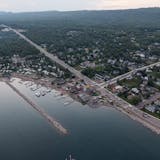The Minneapolis Park and Recreation Board is starting the process of updating its comprehensive plan, "Parks for All." Unfortunately, that means for all humans — whatever their age, gender, race or mobility, and virtually any activity they want to do on parkland.
What's wrong with this picture? The news lately is that more than 1 million species are being pushed to extinction. Billions of animals worldwide will die, many here in Minneapolis and our parks. Different circumstances will doom different species, but the No. 1 reason given for any species' decline is habitat loss. Humans continue to gobble up land for our businesses, our homes, our lives, our games — whatever we want to do — without consideration for wildlife. We do so even though it's destroying ecological function and our environment, and at our own peril.
"The evidence is crystal clear: Nature is in trouble. Therefore we are in trouble," said Sandra Díaz, one of the co-chairs of the Global Assessment Report on Biodiversity and Ecosystem Services. "We are eroding the very foundations of our economies, livelihoods, food security, health, and quality of life worldwide."
At Roberts Bird Sanctuary, I recently saw a snapping turtle trying to dig a hole to lay her eggs. Many people are worried about the turtles because so few places are left where turtles can lay their eggs. Only 20% of eggs survive because of predators and other disturbances. At first I was very excited to see the turtle, then I realized she was trying to dig a hole next to the road that runs through the sanctuary, which is built on several layers of rock and gravel. Sadly, though she tried for a long time, she couldn't dig a hole and didn't lay her eggs. I hope she found a safe place, but it's doubtful.
Our own survival depends on a healthy ecosystem, which cannot happen without wildlife — from bees and other pollinators, to birds, to mammals and turtles — we need them all. They have as much right to be here as we have. Something is terribly wrong when the mission of the Park Board seems to be to maximize humans' "use" of our parkland.
The board's stated mission is to "permanently preserve, protect, maintain, improve, and enhance its natural resources, parkland, and recreational opportunities for current and future generations."
The mission is not to maximize human recreation and not to cram as many people and as many uses into every inch of parkland in our city as possible. To continue to do so is to destroy our environment and to harm, not just these magnificent animals, but humans in the process. Yet that's what's happening. Geese are slaughtered, beavers are drowned, pollinators are poisoned and birds collide with windows because the Park Board does not value all living beings enough to consider the impact of activities on wildlife and to eliminate or at least mitigate those impacts. We make sure that dogs have places to run, but not that wildlife have places to live.
These problems will worsen as the city's population increases. Park Board members and staff have the power and the means to change this mind-set and to save wildlife in our parks. A few examples of actions they can take to prioritize the protection and enhancement of wildlife habitat:


